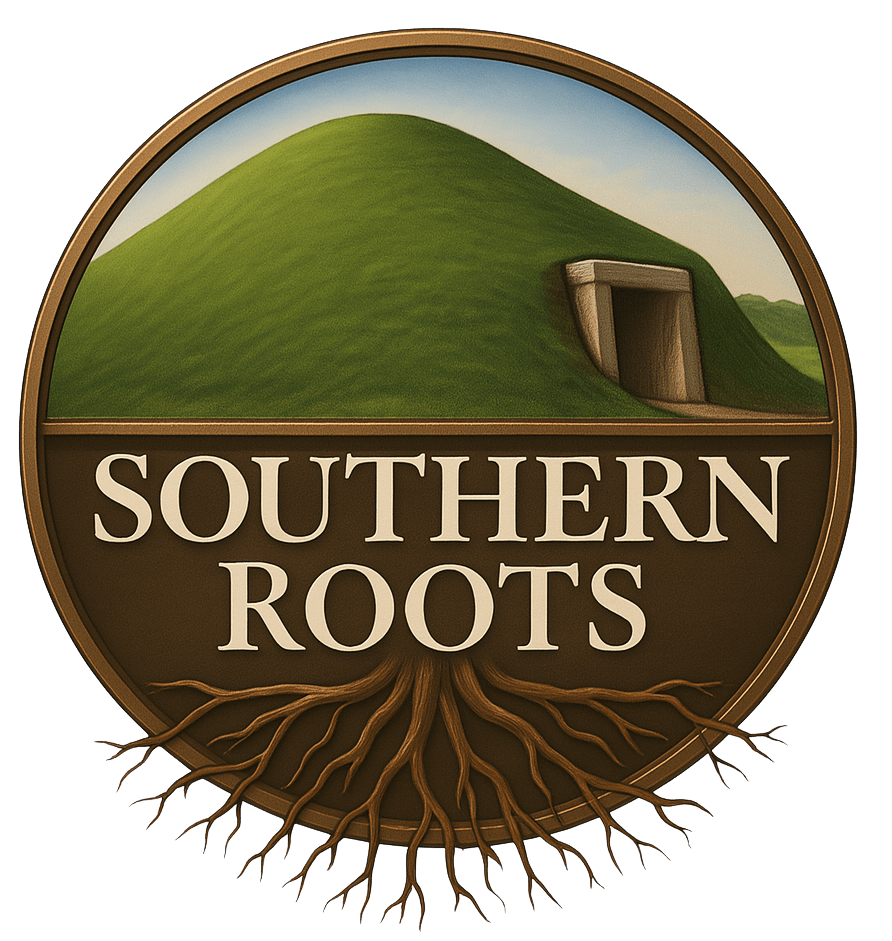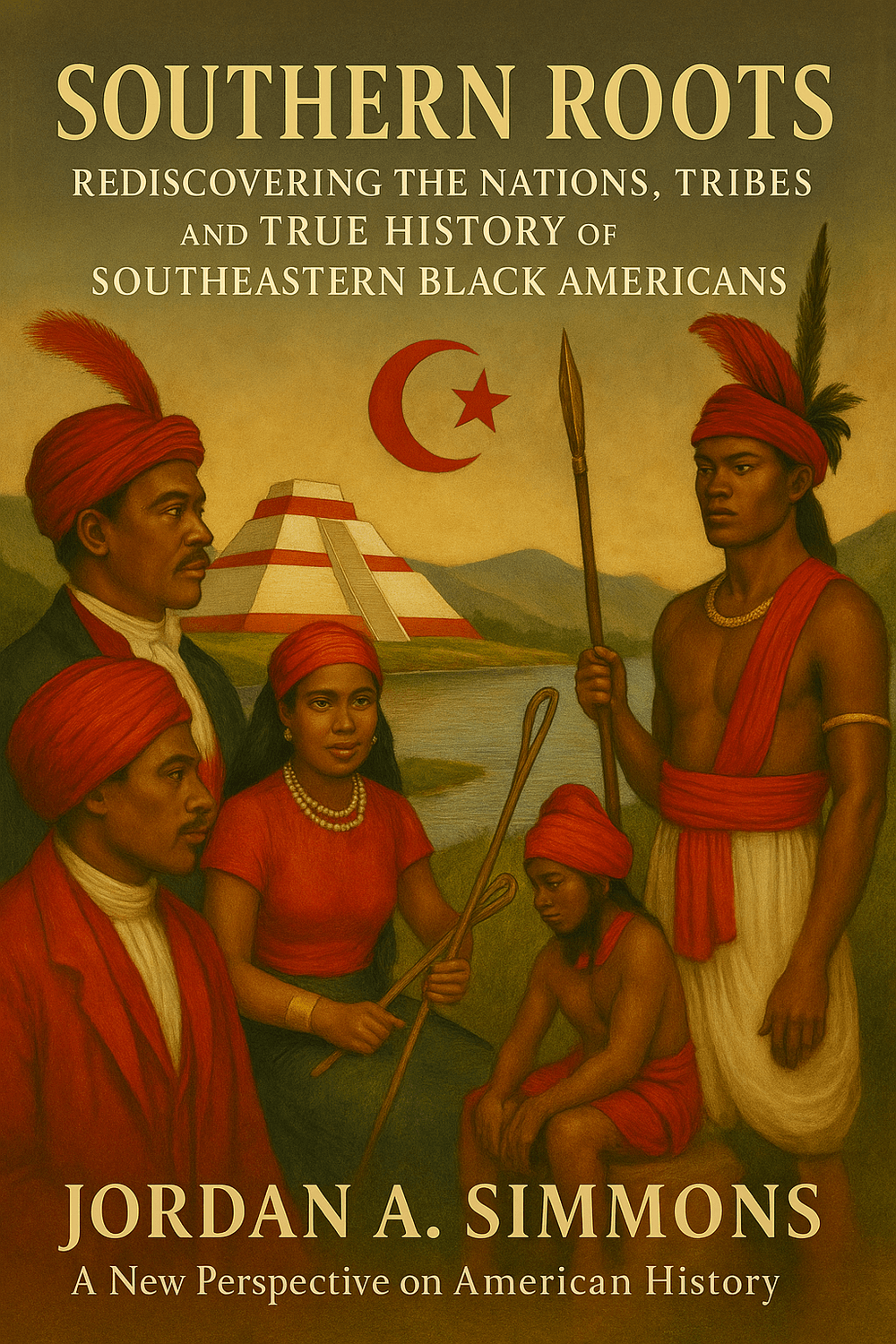Britain’s Forgotten Dark Ancestors
The Swarthy Moors, Picts, and Scots Who First Called the Isles Home
“The Scots were, also, Mauri — or Moors.” — Ancient and Modern Britons, p. 202
What If the First Britons Weren’t White?
When most people picture ancient Britain, they imagine fair-skinned Celts, blond Anglo-Saxons, or red-haired Highlanders battling in misty hills. But what if that image — so deeply ingrained in textbooks and films — is only half the truth?
What if the original Britons, Picts, and early Scots were dark-skinned, curly-haired, and closely related to the Moors of North Africa?
Historical texts, from Roman accounts to 19th-century ethnological studies, tell a very different story — one that’s been buried beneath layers of conquest, reclassification, and racial myth-making.
The Three Races of Ancient Britain
According to Ancient and Modern Britons, Britain’s population before and during the Roman era included at least three distinct racial types:
Fair whites — tall, light-haired Celts and Belgae
Dark whites — swarthy or tawny-skinned groups with European features
Blacks — short, dark-skinned, black-haired, Iberian-related peoples like the Silures and Picts
As the book explains:
“Two main stocks of Britons certainly lived in the southern part of the island at the date of the Roman invasion… One was the Aryan race of the Kelts… the other was the Euskarian race of the Silures… dark-haired, dark-eyed, and dark-skinned people.”
— Ancient and Modern Britons, p. 186
And just after that:
“They were, at least, fair whites, dark whites, and blacks.”
— Ancient and Modern Britons, p. 187
This layered population — including African- and Iberian-featured peoples — challenges modern assumptions that ancient Britain was uniformly white.
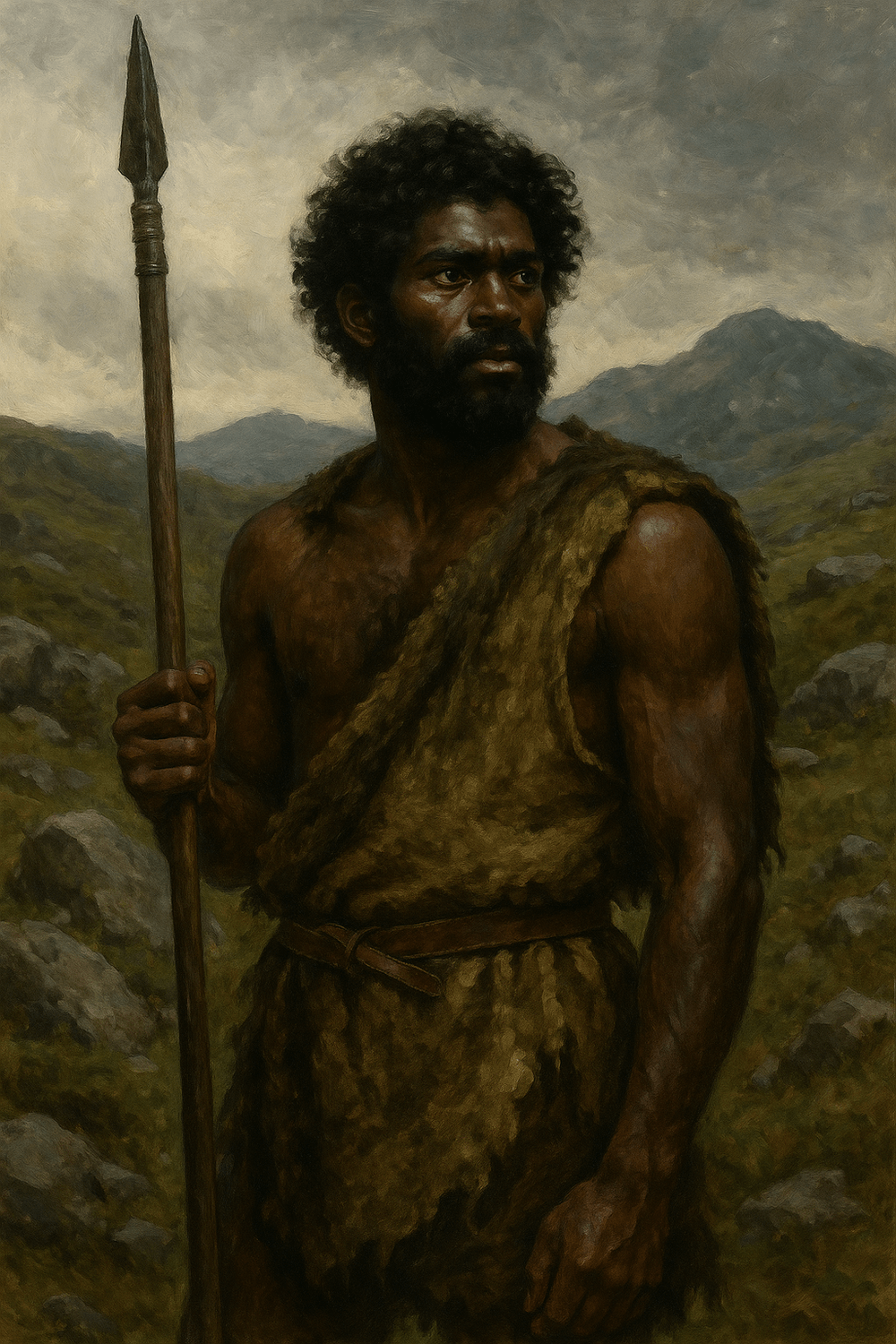
Figure 1.
AI-generated depiction of a Silurian warrior based on historical descriptions from Ancient and Modern Britons (1884) and Roman accounts. The Silures, a dark-skinned, curly-haired people of ancient Britain, were described as resembling the Iberians and Moors. This image is a fictional reconstruction created to visualize the swarthy Indigenous populations who once inhabited the British Isles.
The Moors of the Isles
The Roman poet Claudian, writing in the 4th century, made it unmistakable:
“He subdued the nimble blackamoors — not wrongly named the painted people.” — Ancient and Modern Britons, p. 46
This description refers to the Picts, known for tattooing and painting their bodies with woad. But Claudian doesn’t call them merely “painted” — he calls them Moors. The Latin word Maurus was used to describe dark-skinned or black men, often equated with Africans. In Gaelic, similar terms appear:
gorm — blue, woad-colored, or dark-skinned
dubh — black, as in Dubh Eireannach (“black Irishman”)
In other words, the painted Picts and the black Moors were one and the same.
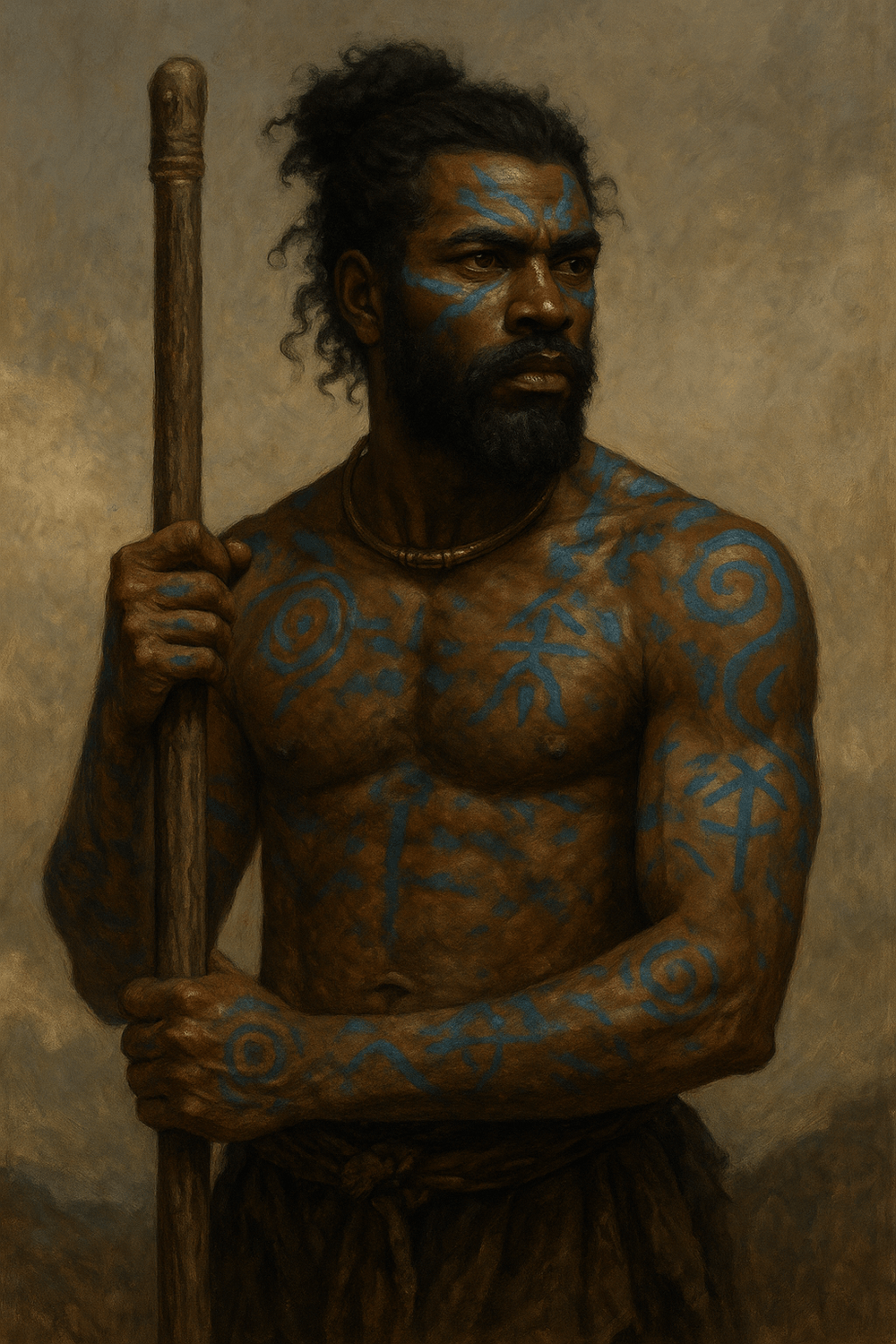
Figure 2.
AI-generated depiction of a Painted Pictish Moor, based on historical sources describing the Picts as dark-skinned warriors who adorned their bodies with blue woad tattoos. Roman and Gaelic texts equated them with the Mauri — or Moors — of North Africa. This reconstruction visualizes the ancestral Britons described as both Indigenous and swarthy, bearing ritual markings and wielding spiritual authority in ancient Scotland.
Heraldry and the Moors of Scotland
British nobility didn’t hide this ancestry — they enshrined it in their crests.
“The heraldic representation of a ‘Moor or Negro-man’... has woolly hair, black skin, and is styled a Moor or Saracen.” — Ancient and Modern Britons, p. 55
Even Scotland’s legendary Douglas family carried this legacy. Sir James Douglas, known as the “Black Douglas,” fought alongside Robert the Bruce and was described as:
“of a black and swart complexion… a Moor or Saracen himself.” — Ancient and Modern Britons, p. 203
From Ireland to Scotland: The Black Scots
Early records show that the Scots arrived from Ireland and shared ancestry with the Picts. Together, they formed what later chroniclers called the “black herds of Scots and Picts.”
“They, also, were Mauri — or Moors.” — Ancient and Modern Britons, p. 202
These weren’t just poetic metaphors. Contemporary observers described them as black in skin, swarthy, and woolly-haired.
Later, when the word “Scot” became associated with rebellion and resistance, these Indigenous dark Britons were labeled “vagabonds” or “gypsies.” But they were in fact the original inhabitants — the freemen, warriors, and seafarers of pre-Celtic Britain.
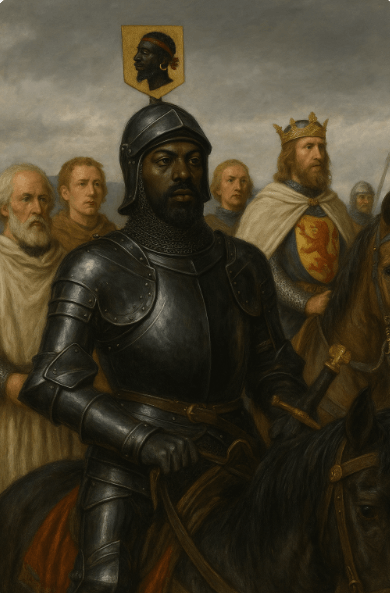
Figure 3.
AI-generated depiction of Sir James “Black Douglas,” inspired by historical accounts describing him as having a “black and swart complexion.” Featured here in full armor beside King Robert the Bruce, this fictional reconstruction reflects the Moorish ancestry preserved in Douglas family lore and heraldry — including the black man’s head crest. Such imagery affirms that noble lineages in medieval Scotland included visible African or swarthy ancestry, later obscured by historical revision.
Language, not Skin, Defined Power
Despite their dark features, these Indigenous Britons often spoke Celtic languages like Gaelic. But their linguistic affiliation was not proof of white ancestry — it was a sign of cultural continuity.
“The Celtic language was spoken by the white invaders. But the Picts and Scots spoke it too — though they were black.” — Ancient and Modern Britons, p. 187
This is crucial. Language and culture blended, but racial difference remained visible — even acknowledged — for centuries.
Why This History Was Erased
Over time, as Norman, Flemish, and Anglo elites took power in Britain, they redefined national identity along racial lines.
Dark-skinned nobles became mythical “Saracens” or “Black Douglases.”
Moorish-looking commoners were labeled “gypsies.”
The true Pictish and Scottish legacy was whitewashed or replaced.
Even modern scholars have struggled with these truths — preferring vague terms like “swarthy” or “exotic,” rather than confront the reality that the first Britons were often black or brown-skinned.
A Shared Legacy with the American South
For readers of Southern Roots, this story will sound familiar.
Just as the Indigenous Moors of the Southeast U.S. were reclassified as “Negro,” “freedmen,” or “slaves,” the dark-skinned Britons were gradually erased, renamed, and replaced — first in myth, then in law.
But the truth remains in the records.
The Moors were not visitors to Britain.
They were Britain.
And their legacy lives on — in the names, the lands, and the blood.
If this blog opened your eyes to a buried chapter of British history, you’ll find even more in our book.
Uncover the Indigenous, Moorish, and Sovereign identity of Black Americans — before reclassification, before colonization, and before the myth of race.
Let us know what you think in the comments!
